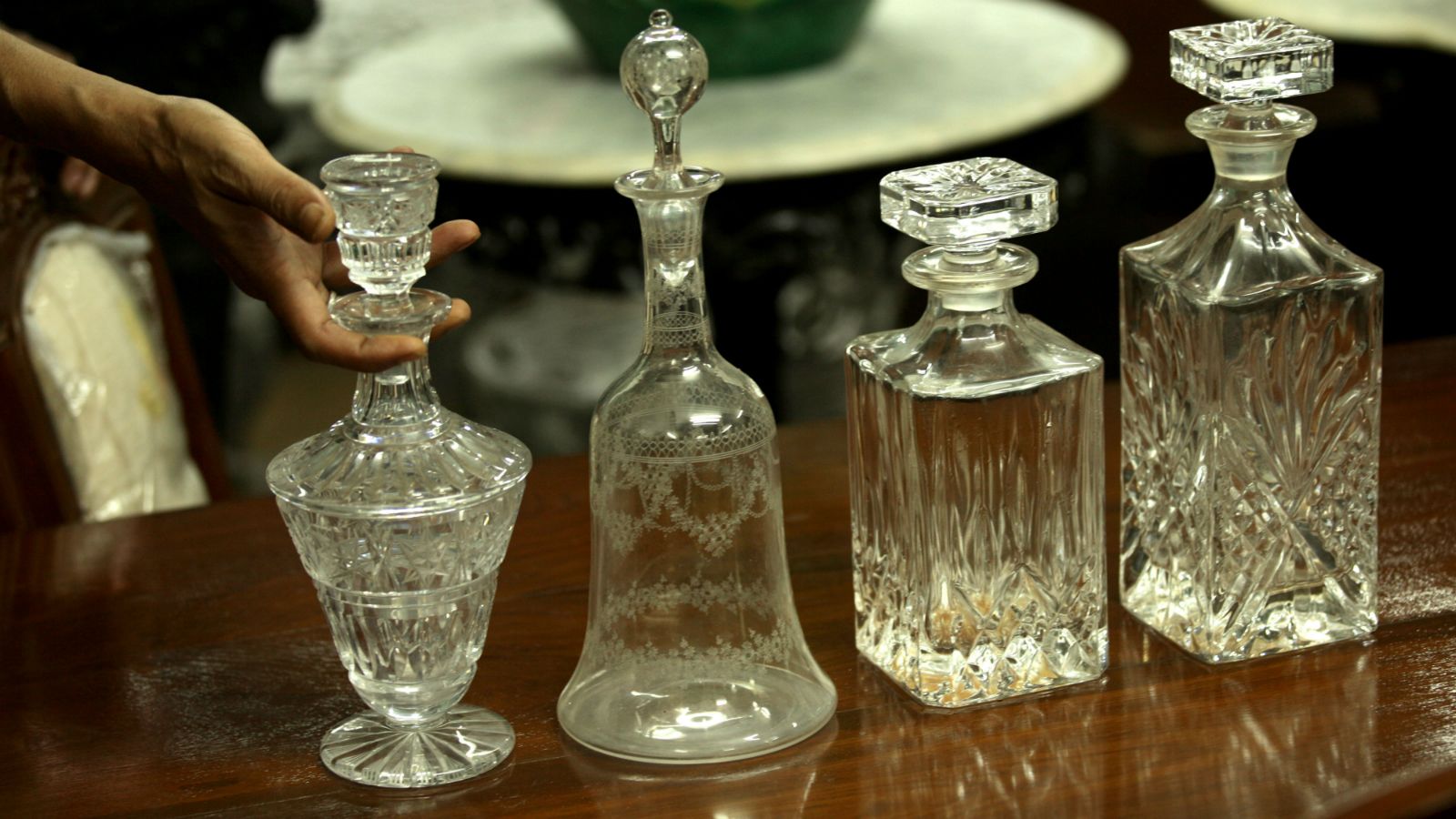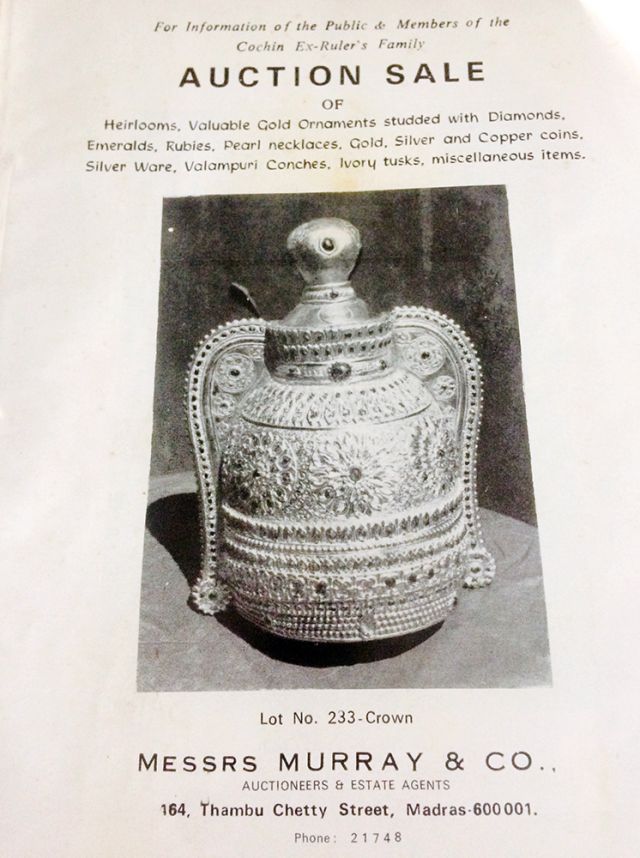
The audience was silent and tense, with heads rapidly turning from the auctioneer to the two people engaged in a heated bidding match. “Going once, going twice, sold at 10,500!” he yelled. A balding man sniggered and instructed his accountant to write a cheque. The two bidders, accustomed to such thrilling encounters, shook hands. Kannan, a first-timer at the auction house mumbled discreetly: “I could have bought what they were fighting over in Chennai’s Pondy Bazaar for Rs600. This was an ego match.”
Murray and Company, which started out in Chennai’s Parrys’ area, opposite the high court on Thambu Chetty Street, has been thriving for the last 90 years. It started off by auctioning properties from the Madras high court and eventually became a household name in the 1960s.
In the 1920s, the last functioning British auction house, Dowden and Company, which worked out of Broadway in Chennai, moved back to the UK. Two years after Dowden’s departure, the government of India and the Madras high court expressed a need for auctioneers in the city. That year S Vedantam and his brother S Rajam started Murray and Company as an auctioneering firm specialising in immovable properties.
In 1930, a building that later became the Life Insurance Corporation’s office (and has now been demolished) functioned as the headquarters of the auction house. Everything from used machines and vehicles, industrial processes and maintenance scrap, unused spares, stock, and unclaimed cargo were sold off here. Thus began the custom of the famed Sunday Murray and Company auction.
The thrill of the bid
Hemant Srivatsa, the auctioneer and one of the two partners of the auctioning and valuing firm, sat on a plush teakwood podium. Two men held up a gold plated imitation of a Ram Durbar painting. Srivatsa looked at the article and smirked. “My problem with this Durbar is that everyone is standing,” he said. But the audience was in bidding mode, and the wisecrack was lost in the confusion over the valued price.
“Bring an almirah, bring a toy, bring industrial scrap, bring your grandfather’s chair, Murray’s will handle it!” Kannan had said describing the auction held at Gemini Tower on Oct. 01. At least some of the 100-150 people present were seated on the antique chairs and sofas put up for auction. Many were present only for the spectacle and thrill.
Sujan Gangadhar, Srivatsa’s partner in the firm, took the dais and sighed looking at the clock. A hundred and seventy-six items still had to be auctioned in two-and-a-half hours. He positioned his glasses, took a deep breath and began. For Gangadhar, this was a test of stamina. For Srivatsa, it was about auctioning the right item at the right time.
Fame and idiosyncrasies
The auction hall in Mount Road was where Ramnath Goenka once bought the Express Estate, where the Apollo Hospital property in Greams Road was auctioned off by the royal family of Kochi and where The Madras Club and the Agurchand Mansions were auctioned off.
The humour at the Sunday auctions is timeless. According to many who attended auctions in the past, Rajam conducted the auctions best, peppering monotonous announcements with quips like: “Sold to the lady whose husband has his hand on her mouth!”
There were more elaborate jokes too. In the 1930s the founder secretary of Vidya Mandir School, Subbaraya Aiyer, a tall, heavy-set man, had squeezed himself into a child’s rocking chair during the auction in Mandaveli. Ramnath Goenka was visibly amused and bid for the rocking chair Aiyar sat on. Later, Goenka is believed to have had the chair delivered to Aiyar’s house with a note: “This chair suits you and I hope you enjoy it.”
In 1930, the Travancore Royal Family approached Aiyar and requested that Murray auction off their jewellery, chandeliers, and lustre lamps. “While the chandeliers and miscellaneous items were sold, the jewellery never was. To date, we have never known why,” Srivatsa said.
In a bid to preserve the sanctity of the auction, cellphone bids during the auction are not accepted. Telephone bids, however, are accepted and executed regularly. “We have a bidding form and we allow telephone bids in advance,” said Sujan, acknowledging that he saw a future in accepting remote bids, and might eventually reconsider his stance.
Method to madness
The process for auctioning curios begins with cataloguing them, recounting their history in a thorough fashion, described in poetic detail. Srivatsa navigates through the ebb and flow of the process.
“It’s all about maintaining that attention span through interest points,” he said. “A swivel chair will always follow a desk, not a piece of crockery.”
Property auctions hold equal weight, but the process is long drawn and rife with legal tussles. “Normally in mortgaged property and properties sold by the court, nobody likes to lose their property—so if there is a default, there is always a question of whether the auction was done correctly, and no lawyer worth his salt will cast a few allegations just to make his case stronger. But the proof is in the cross-examination,” said Gangadhar.
Srivatsa is a repository of history and adores the thrill of auctions. Gangadhar is more interested in securing Murray’s future. “Online auctions, e-auctions are the way to go,” he said. “People don’t have the time to sit through an auction anymore. They want specifics, they want to save time. Unfortunate perhaps, that this generation will not discover the thrill of auctions. We intend to keep the physical auctions, but want to tap the market that bids from their computer.”
This post first appeared on Scroll.in. We welcome your comments at ideas.india@qz.com
source: http://www.qz.com / Quartz.com / Quartz India / by Divya Karthikeyan, Scroll.in / October 23rd, 2-017 – Quartz India

